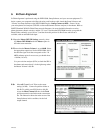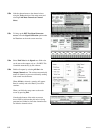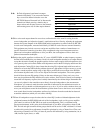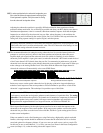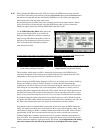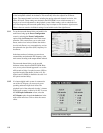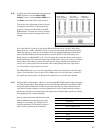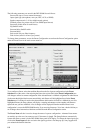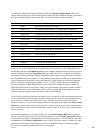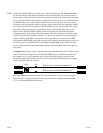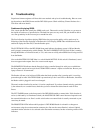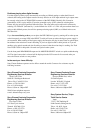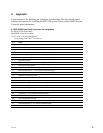
6-9
DFP-3000
To change the output format for the selected Preset, click on the Speaker (Output) Matrix edit box and
select from the list that pops up. This list automatically contains only those matrix formats that are allowed for
the type of input signal that you have chosen. Here are all the matrix modes and their meanings:
Mode Name Meaning
1 SDDS Eight inputs sent directly to eight outputs
2 SDDS 7.1CH #1 except LC and RC mixed into L, C, R; SW to SW, LC, and RC outs
3 SDDS 6CH #1 except LC and RC mixed into L, C, R; SL +SR to SL out; SW to LC and RC
4 SDDS 5.1CH #1 except LC and RC mixed into L, C, R; SW in to SW out only
5 SDDS 4CH #1 except LC and RC mixed into L, C, R; SL +SR to SL out; SW to SW only
6 Surround wide L, R matrix decoded as Lt, Rt, bass extended; to L, C, R, SL = SR, SW
7 Surround narrow L, R matrix decoded as Lt, Rt, bass extended; to LC, C, RC, SL = SR, SW
8 Stereo wide L, R in to L, R out; bass extension synthesized and sent to SW
9 Stereo narrow L, R in to LC, RC out; bass extension synthesized and sent to SW
10 Mono C in to C out with Academy Filter; SW output off
11 Normal L, R in to L, R out; SW output off
12 Normal narrow L, R in to LC, RC out; SW output off
13 Matrix decode W L, R matrix decoded as Lt, Rt and sent to L, C, R, SL = SR; SW off
14 Matrix decode N L, R matrix decoded as Lt, Rt and sent to LC, C, RC, SL = SR; SW off
15 Surround L, R in to SL, SR out; SW output off
16 LRS L, R matrix decoded as Lt, Rt and sent to L, R with SL = SR; SW off
For the AUX1, AUX2, and SDDS Presets, fallback Presets can be selected. To select a fallback Preset, use
the edit button just below the Fallback Preset label. If no fallback is permitted for the type of input you have
selected, this button will indicate Not Allowed. Otherwise, when you click on it, a selection list will pop up
which shows all Presets including No Preset, with prohibited Presets grayed out to indicate they are unavail-
able. The SDDS Preset allows selection of a second fallback preset making it possible for all digital formats to
be played automatically with optical as an overall fallback if no digital formats are available on a particular
reel. For example, the fallback sequence SDDS → AUX1 → AUX2 → NR2 indicates that if SDDS data
becomes unavailable, the DFP-3000 will fall back to its AUX1 input. If neither formats are available, the
DFP-3000 will fall back to its AUX2 input. Finally, if no digital formats of any kind are available, the DFP-
3000 will fall back to its optical (NR2) input. All this assumes, of course, that the other digital systems are
installed and that their logic interfaces are properly wired to the DFP-D3000.
For each Preset, graphic and parametric equalization can be switched on or off, surround delay processing
can be switched on or off, the number of seconds of surround delay can be set if surround delay process-
ing is switch on, a volume offset for the preset can be specified, and the sub-woofer low pass filter
frequency can be set. To select and set these parameters, use the appropriate control in the Preset Config-
uration area of the screen. If the test signal generator is running, only the preset offset, surround channel
delay and EQ on/off switch controls, surround delay setting, and the sub-woofer low pass filter frequency
controls are active.
After making modifications to a Preset Configuration, use the Send Config to DFP button to send the
changes to the DFP-3000 decoder from your connected laptop. Even if the Send Config to DFP button is
not used, the Setup Software will automatically send the new parameters to the DFP-3000 decoder when
the Exit button for the Preset Configuration screen is clicked. Save these settings as a theatre file when
prompted in case they need to be restored to recover from unintended changes, transferred to another
processor, or reloaded to the DSP-82 board if it is ever replaced.



